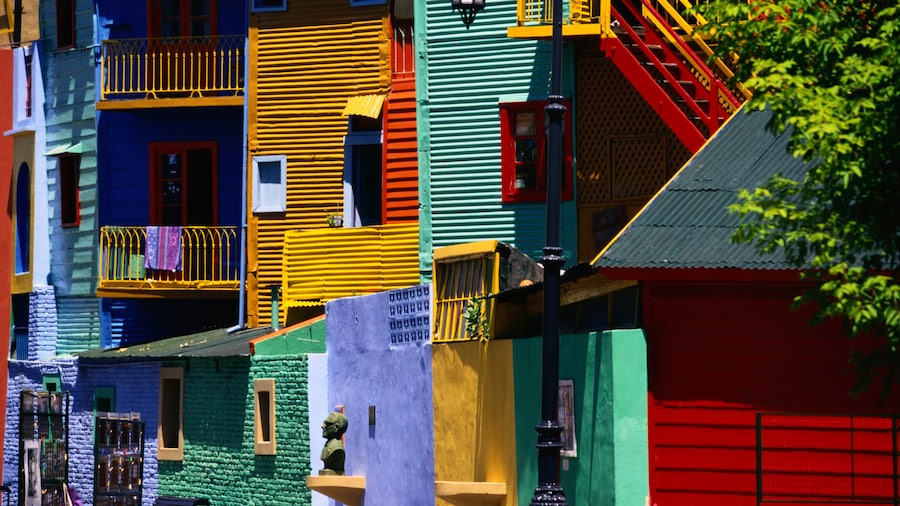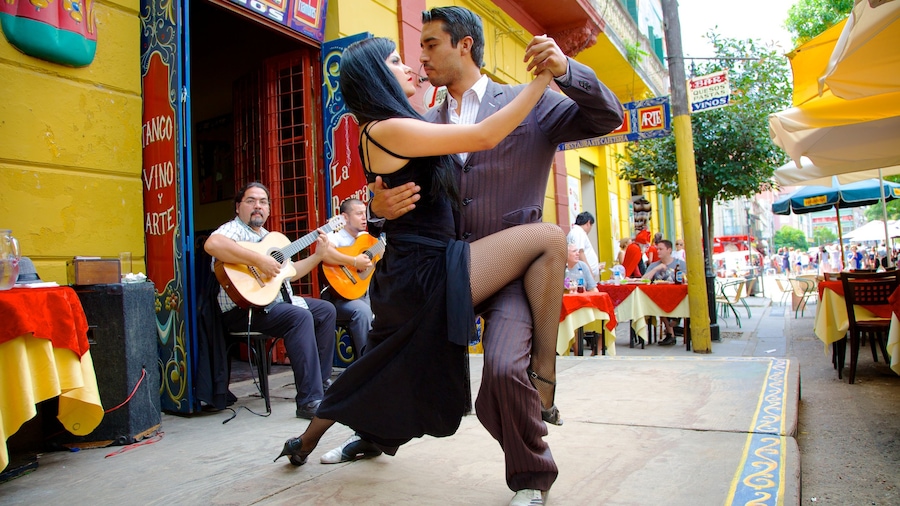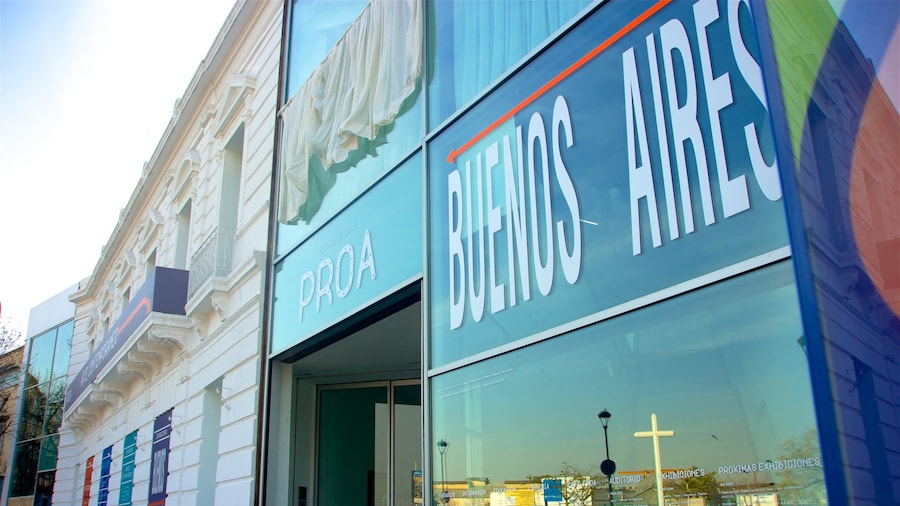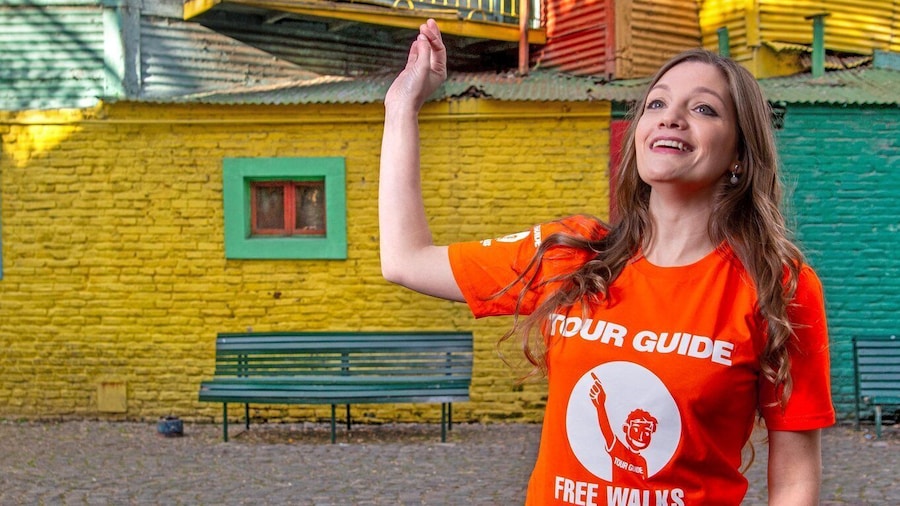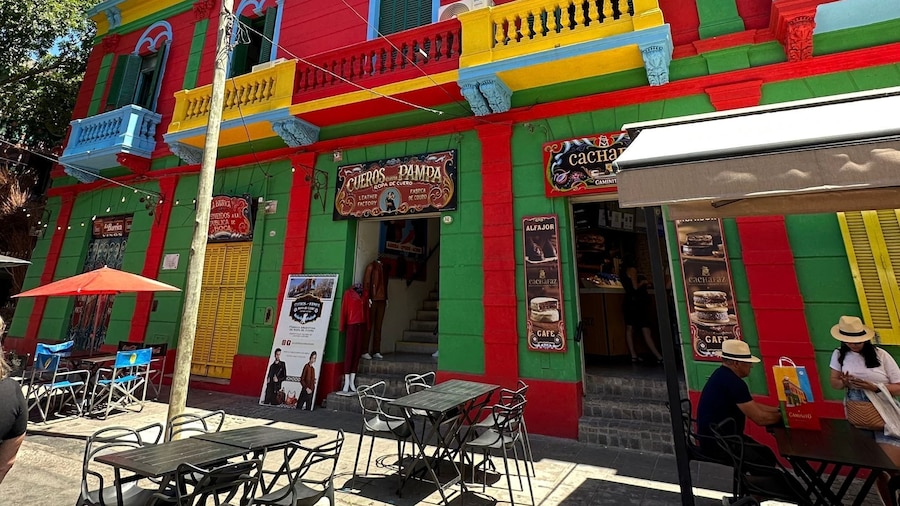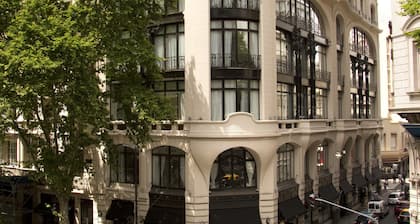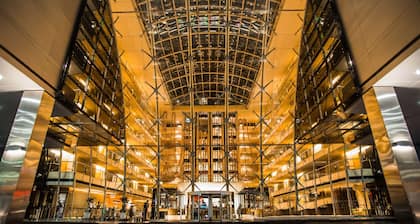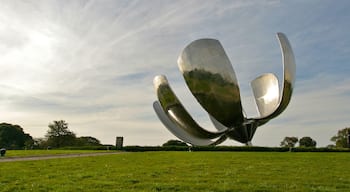Tango dancers spin along cobblestone streets, cartoonish mannequins look down from balconies and brightly coloured houses are stacked like building blocks in the vibrant port neighbourhood of La Boca. The rich heritage of one of Buenos Aires’ oldest districts is on display in its central waterfront street, “el Caminito”. Walk along the cobblestones to find multicoloured cafés, shops, galleries and more. Then head north to the neighbourhood stadium to watch soccer, one of Argentina’s favourite pastimes.
Allegedly, the wild colour scheme of La Boca’s houses comes from its working-class background. Poor immigrants who settled here painted their “conventillos” (tenements) using the various paints found at the nearby docks, resulting in a wide spectrum of colours.
Throughout the streets, crowds gather around professional dancers, who tango in the open air. Watch them from the terrace of one of the many cafés, which serve regional cuisine. Try a “parilla”, which is meat, such as steak, blood sausage or an organ, barbecued on a coal fire.
La Boca features several museums, including the Museo Histórico de Cera, where you can see scenes in Buenos Aires history shown in wax sculptures. See contemporary Argentine and international art at the Fundación Proa Museum and Cultural Centre. Visit the café for a view of the Plata River and the Buenos Aires port.
La Bombonera stadium in La Boca is legendary in Argentine soccer. Many of Argentina’s most famous soccer players were discovered here, like Diego Maradona and Carlos Tevez. If you are visiting during soccer season, watch a Boca Juniors game in the stadium. Otherwise, tour the complex and browse its museum, which features trophies, uniforms and other soccer memorabilia.
Take a taxi or a tourist bus to reach La Boca, which is located southeast of the city centre. To ensure you have a safe and enjoyable time here, stay around crowds and avoid backstreets, especially if you are in the area at night.






